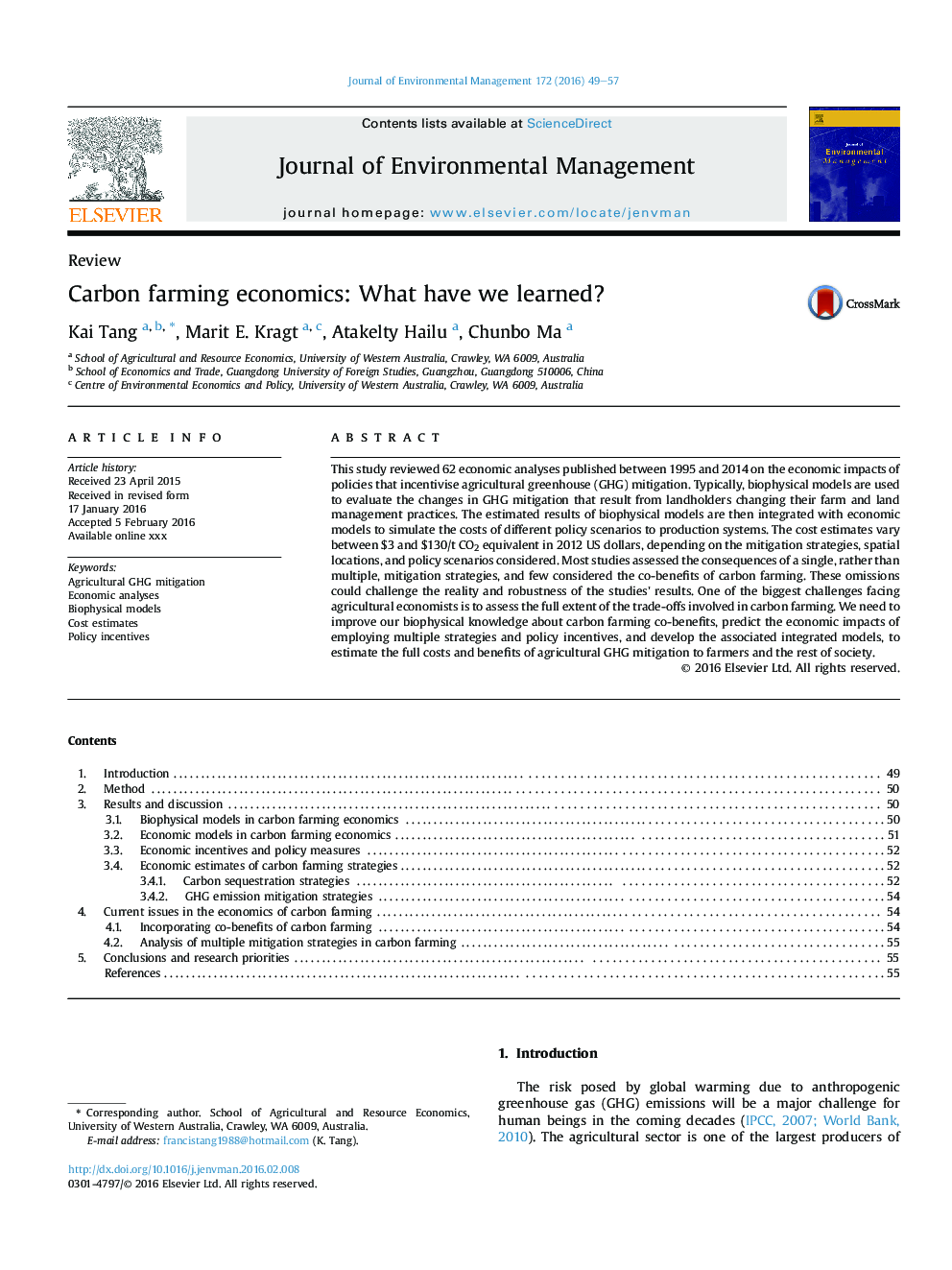| Article ID | Journal | Published Year | Pages | File Type |
|---|---|---|---|---|
| 7480559 | Journal of Environmental Management | 2016 | 9 Pages |
Abstract
This study reviewed 62 economic analyses published between 1995 and 2014 on the economic impacts of policies that incentivise agricultural greenhouse (GHG) mitigation. Typically, biophysical models are used to evaluate the changes in GHG mitigation that result from landholders changing their farm and land management practices. The estimated results of biophysical models are then integrated with economic models to simulate the costs of different policy scenarios to production systems. The cost estimates vary between $3 and $130/t CO2 equivalent in 2012 US dollars, depending on the mitigation strategies, spatial locations, and policy scenarios considered. Most studies assessed the consequences of a single, rather than multiple, mitigation strategies, and few considered the co-benefits of carbon farming. These omissions could challenge the reality and robustness of the studies' results. One of the biggest challenges facing agricultural economists is to assess the full extent of the trade-offs involved in carbon farming. We need to improve our biophysical knowledge about carbon farming co-benefits, predict the economic impacts of employing multiple strategies and policy incentives, and develop the associated integrated models, to estimate the full costs and benefits of agricultural GHG mitigation to farmers and the rest of society.
Related Topics
Physical Sciences and Engineering
Energy
Renewable Energy, Sustainability and the Environment
Authors
Kai Tang, Marit E. Kragt, Atakelty Hailu, Chunbo Ma,
